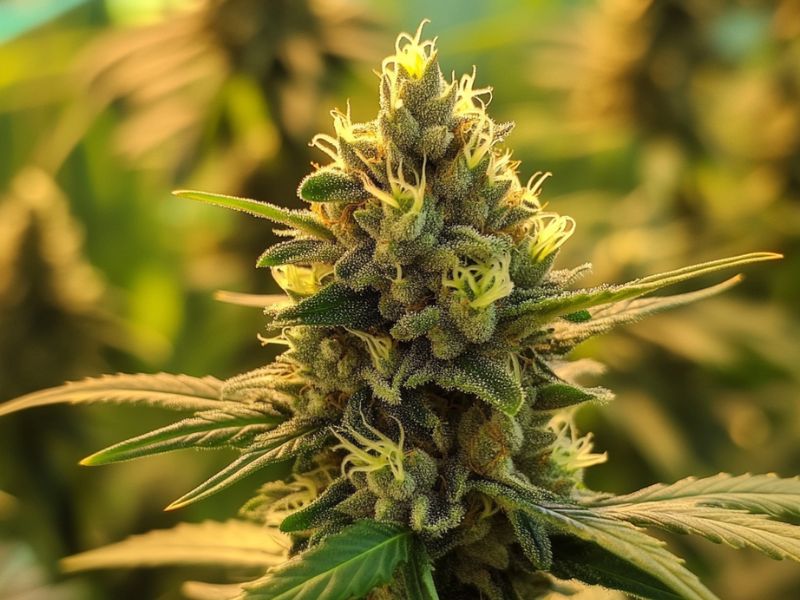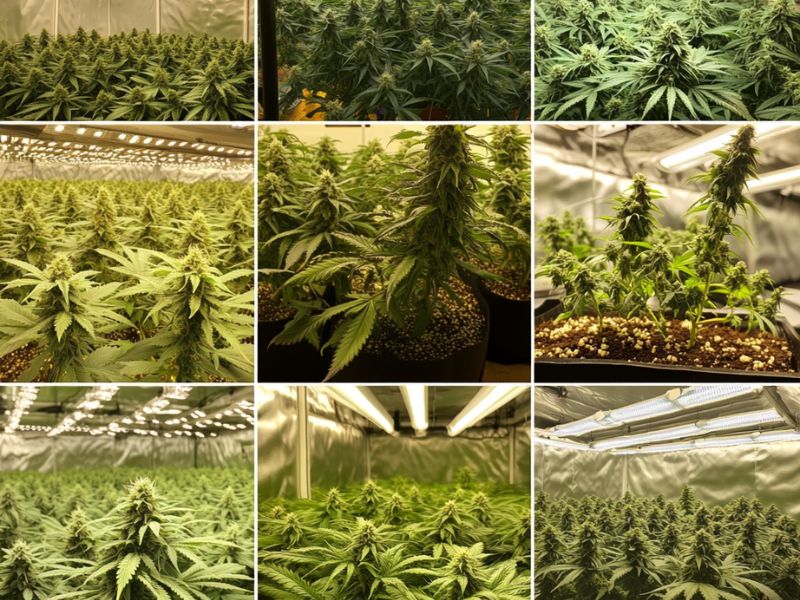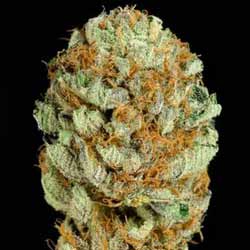Marijuana Plant Stages: 6 Important Phases to Monitor
Understanding the marijuana plant stages is essential for anyone growing cannabis, whether for personal use or commercial cultivation. Each phase in the cannabis life cycle requires careful attention to ensure healthy growth, optimal yield, and potent cannabis buds.
Table of Contents
How a Marijuana Plant Grows
The cannabis life cycle unfolds through several key phases, each influencing the plant’s growth, structure, and final potency. From seed to harvest, understanding the different cannabis growth stages helps growers monitor plant health, time interventions properly, and ultimately produce quality cannabis buds.
Stage #1: Germination Stage
The marijuana plant starts its journey in the germination stage. This phase begins when cannabis seeds absorb water and crack open to reveal a root (radicle).
Duration: 1–7 days
Key Traits:
- The seed sprouts a taproot and then a small stem emerges
- The first pair of embryonic leaves (cotyledons) appears
Tips:
- Soak seeds for 12–24 hours before planting to speed up germination
- Use a moist paper towel or place seeds directly in a moist growing medium
- Maintain darkness and warmth (70–85°F) to ensure healthy root growth
Stage #2: Seedling Stage
Once the seedling emerges, it starts developing its first set of true leaves with the recognizable serrated edges of cannabis plants.
Duration: 2–3 weeks
Key Traits:
- Delicate root system forms
- Leaves begin to photosynthesize
- Fan leaves slowly develop
Tips:
- Keep soil moist but not waterlogged
- Provide 18–24 hours of light exposure daily
- Use minimal nutrients—seedlings are sensitive to overfeeding
Stage #3: Vegetative Stage
This is a period of rapid growth where cannabis plants focus on building structure—growing stems, branches, and leaves.
Duration: 3–8 weeks or longer depending on growing goals
Key Traits:
- Vigorous vegetative growth
- Development of a strong root system
- Separation of male and female plants becomes easier
Tips:
- Increase nitrogen-rich nutrients to support veg growth
- Train plants (e.g., topping or low-stress training) to control height and shape
- Keep a consistent 18/6 light schedule for optimal growth
Stage #4: Pre-Flowering Stage
This transitional phase signals that the plant is getting ready to shift from growing leaves to developing flowers.
Duration: 1–2 weeks
Key Traits:
- Growth slows slightly
- Pre-flowers form at nodes, revealing sex of the plant
- Female plants produce tiny white pistils; male plants show pollen sacs
Tips:
- Remove male plants to prevent pollination (unless breeding)
- Watch plants closely for early signs of nutrient deficiencies or stress
- Adjust nutrient ratio to prepare for flowering (less nitrogen, more phosphorus)
Stage #5: Flowering Stage

The flowering phase is where the plant focuses on resin production and bud development.
Duration: 6–10 weeks depending on strain
Key Traits:
- Cannabis buds form and swell
- Pistils and trichomes become more prominent
- Plant hormones shift to support flower development
Tips:
- Switch to a 12/12 light cycle to induce flowering
- Use bloom nutrients high in phosphorus and potassium
- Monitor humidity and airflow to avoid bud rot
- Autoflower plants begin this stage based on age, not light cycle
Stage #6: Harvesting Stage
When cannabis buds reach peak maturity, they are ready for harvest.
Duration: Varies based on strain and grower preference
Key Traits:
- Pistils turn dark brown or orange
- Trichomes shift from clear to cloudy and amber
- Buds are dense, sticky, and aromatic
Tips:
- Use a magnifying glass to examine trichomes—amber trichomes signal readiness
- Harvest during early light hours to preserve resin
- Begin the drying process immediately after cutting
Is It Legal to Grow Cannabis at Home?
In the United States, the legality of growing cannabis at home depends on state law, as federal law still classifies cannabis as a Schedule I controlled substance. Despite federal prohibition, many states have legalized cannabis cultivation for medical or recreational use, each with its own rules and limitations.
In recreational states like California, Colorado, and Oregon, adults aged 21 and older are typically allowed to grow a limited number of cannabis plants at home — often six plants per household or per adult. However, some of these states enforce restrictions such as requiring indoor cultivation or securing plants out of public view.
Medical marijuana patients in many states are granted the right to cultivate more plants than recreational users, often based on their medical needs and physician recommendations. States like Arizona, Michigan, and New Mexico have detailed medical grower provisions.
On the other hand, some states that have legalized recreational or medical cannabis still prohibit home cultivation altogether. For example, in states like New Jersey or New York (as of mid-2025), home growing for recreational use remains illegal or unregulated pending future rulemaking.
It’s important to also consider local (city or county) ordinances, which may impose additional restrictions or bans on home grows even in legal states.
Expert Tips for Marijuana Plant Handling
Proper handling throughout the cannabis life cycle can make the difference between a poor yield and premium-quality harvested buds. These expert tips help maintain plant health, encourage optimal growth, and prevent common issues during each stage of growth.
- Always handle plants gently: Rough handling can damage fan leaves, stems, or developing cannabis buds. Use clean, gloved hands and avoid bending or pinching unless deliberately training the plant.
- Avoid overwatering: Many new growers drown their plants in moist soil. Wait until the top inch of the growing medium is dry before watering again to promote root growth and prevent rot.
- Support during the flowering phase: As buds develop and increase in weight, use stakes or netting to support branches and prevent breakage, especially during the late flowering period.
- Monitor light exposure closely: During the vegetative and flowering stages, maintain a consistent light schedule. Disrupting the dark period during flowering can stress the plant or cause it to revert.
- Train early during veg growth: Low-stress training (LST) or topping should be done in the early vegetative stage to shape the canopy without shocking the plant during the flowering process.
- Inspect plants closely and regularly: Look under leaves and around nodes for signs of pests, bud rot, or nutrient deficiencies. Early detection prevents damage from spreading.
- Keep your tools sterile: Use sanitized scissors and equipment when pruning or harvesting to avoid introducing mold or disease to the plant’s growth environment.
- Avoid touching trichomes: These resin-filled structures are sensitive and contribute to potency and aroma. Repeated contact reduces resin production and damages the final product.
- Maintain stable environmental conditions: Sudden changes in temperature, humidity, or light cycle can stress cannabis plants, stunt growth, or reduce bud formation.
- Harvest at the right time: Use a magnifying glass to inspect trichomes. Clear trichomes are immature, cloudy ones indicate peak potency, and amber trichomes suggest a more sedative effect.
Final Thoughts

Successfully growing cannabis starts with understanding each stage of the plant’s growth and applying careful, informed handling throughout the cannabis life cycle. From germination to harvesting, paying attention to details like light exposure, nutrient uptake, and plant health can make a major difference in both yield and quality.
Whether you’re just getting started or refining your growing technique, staying informed is key to cultivating cannabis with confidence. Keep learning, keep growing — and let each plant teach you something new.
To take cannabis cultivation to the next level, consider researching more advanced techniques like cloning, hydroponics, or strain-specific nutrient schedules.
Frequently Asked Questions
How long does it take to grow cannabis from seed to harvest?
On average, it takes 3 to 5 months to grow cannabis from seed to harvest, depending on the strain, growing environment, and whether the plant is photoperiod or autoflower.
What’s the difference between indica and sativa strains?
Indica strains tend to be shorter, bushier, and have a relaxing effect. Sativa strains grow taller, take longer to flower, and often produce more energizing effects.
Can male plants produce buds?
No, male plants do not produce buds. They develop pollen sacs instead and are generally removed to prevent pollination of female plants.
Do I need special soil for growing cannabis?
While cannabis can grow in various media, a well-aerated, nutrient-rich soil with good drainage is ideal. Some growers also use coco coir, hydroponics, or soilless mixes.
What causes cannabis leaves to turn yellow?
Yellowing leaves can indicate overwatering, nutrient deficiencies (especially nitrogen), improper pH levels, or pest problems. Identifying the stage of growth can help narrow down the cause.
How can I tell if my cannabis plant is getting too much light?
Signs of light stress include leaf bleaching, upward leaf curling, and burnt tips. Adjust light distance and intensity to avoid damaging the plant.
Is it okay to prune during flowering?
Light pruning during early flowering is okay, but heavy pruning should be avoided as it can reduce bud development and stress the plant.
Related Posts
Marijuana Plant Stages: 6 Important Phases to Monitor
How Much Cannabis-does- Does One Plant Yield: 7 Growth Factors
Best Fertilizer for Outdoor Marijuana: 7 Choices for Yields
CATEGORIES
Best Selling Seeds











